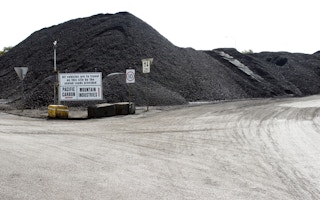When the Senate voted on July 17 to axe the carbon tax, Australia became the first country to reverse course on pricing greenhouse gas emissions.
And the Abbott government’s alternative climate policy - based on an Emissions Reduction Fund with $1.14 billion over four years – remains in doubt because of Senate opposition from Labor, the Greens and the Palmer United Party.
Clive Palmer holds the key given his party’s control of the balance of power in the Senate.
However, his massive coal reserves make him an unlikely champion to lead carbon-reduction effects in a nation that remains addicted to coal.
Australia’s goal of cutting greenhouse gases by at least 5 per cent on 2000 levels by 2020 is a receding target. Instead, Australia remains headed for a 17 per cent increase by decade’s end.
“
There’s a disconnect between what is being priced into a lot of financial assets in Australia and a serious move on climate change
Tim Buckley, a director at the Institute for Energy Economics & Financial Analysis
Mr Palmer’s two proposed coal mines in Queensland’s Galilee Basin may produce 80 million tonnes of coal a year. When burnt – probably in India and China if the mines proceed - the coal will convert to about 170 million tonnes of carbon-dioxide annually, almost a third of Australia’s entire current total, according to Greenpeace.
The Galilee - which also includes giant coal reserves owned by Indian companies Adani and GVK with Gina Reinhart - adds to the big bets being laid that Australia will face few carbon constraints.
The epicentre of coal activity remains Newcastle, a town first named Coal River by prescient early colonists.
The port now ships 150 million tonnes of coal a year, with a capacity of 211 millions. The NSW government recently approved a $4.8 billion plan to add another 70 million tonnes to annual capacity.
“Does the world really need another 10 per cent of coal now or in the next five years?” Tim Buckley, a director at the Institute for Energy Economics & Financial Analysis, said.
Some investors think so. China’s state-backed China Merchants and Hastings Funds Management in April paid $1.75 billion for a 98-year lease on Newcastle port - or 75 per cent more than the NSW government expected.
That largesse “says to me that there’s a disconnect between what is being priced into a lot of financial assets in Australia and a serious move on climate change,” said Mr Buckley, a former Citi analyst.
Coal miners have been the stocks to avoid with prices of the commodity halving in the past five years.
Investors sinking cash into the world’s top 35 listed coal firms would have blown almost two-thirds of their dough in the past three years compared with a 70 per cent return if they had just tracked the MSCI World index of stocks, according to Bloomberg data.
Ratings agency Standard & Poor’s this week warned that while coal demand is likely to increase because of China and India, the potential remains for a sudden slowdown or even a drop if nations make serious efforts on global warming.
“We believe the main risk will be the speed of change,” the S&P report said. “The changes in the coal industry in the medium- and long term could result in stranded assets – coal reserves with no economic returns.”
Brendan Pearson, chief executive of the Minerals Council is upbeat: “The majority of global forecasting agencies believe there will be solid ongoing demand for coal.”
The coal industry employed 54,900 directly, as of February, and paid $38.1 billion in taxes and royalties since 2006-07, he said.
The Bureau of Resources and Energy Economics estimates exports of thermal coal for power plants will grow 4.6 per cent a year by 244 million tonnes by 2018-19, earning $21.2 billion. Coking coal used in steel making will edge 1.8 per cent higher yearly to 193 million tonnes by then, generating $28 billion in exports.
HSBC economist Paul Bloxham warned that coal growth may be no guide to industry health: “In many cases, export volumes are expected to continue to rise as miners stand to lose more if they stop production than if they continue”.
Mr Buckley said forecasts tend to ignore plans by Indonesia, Mongolia, Russia, US and others to lift coal exports which will keep prices down - hurting royalites and investment returns in the process.










